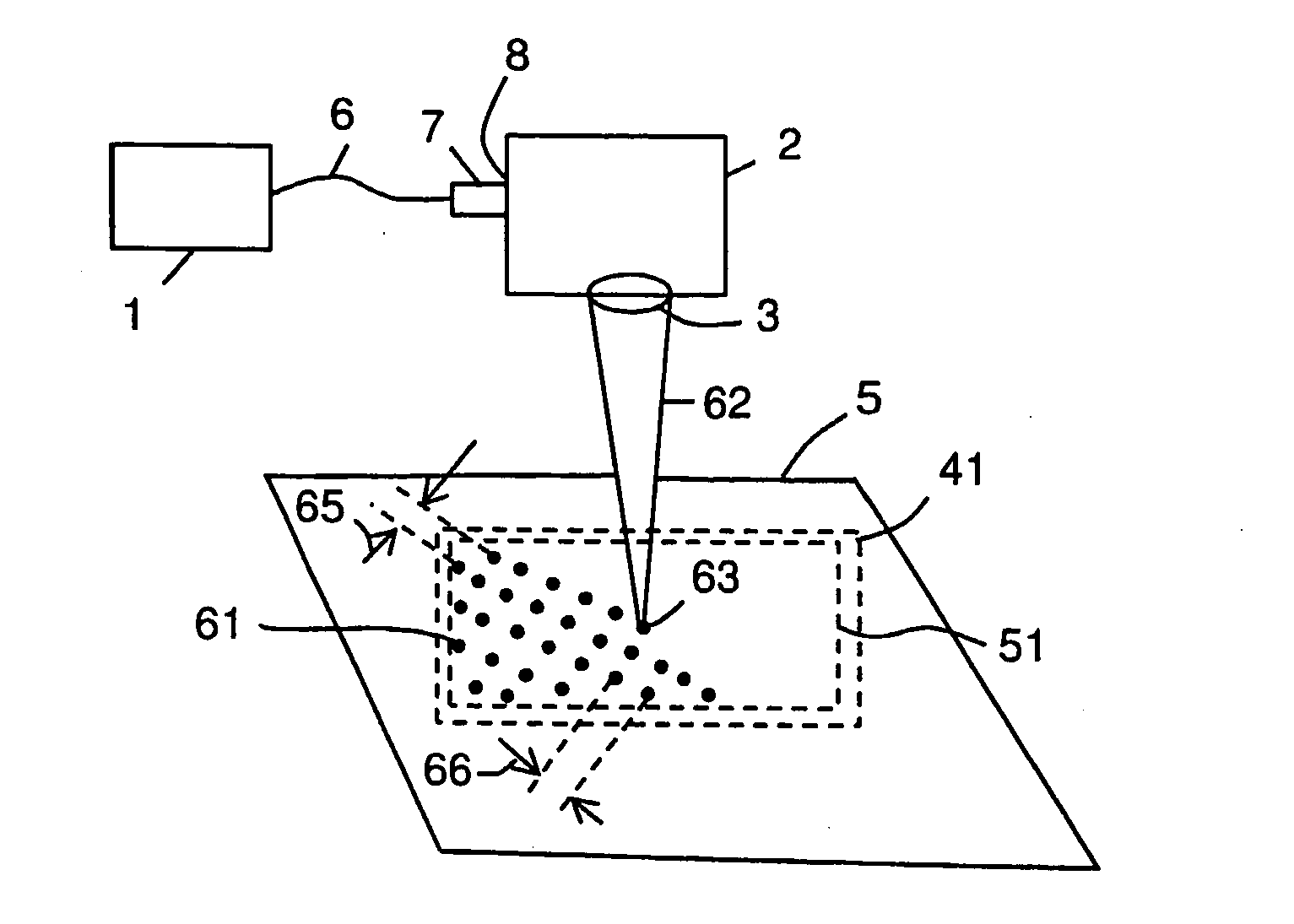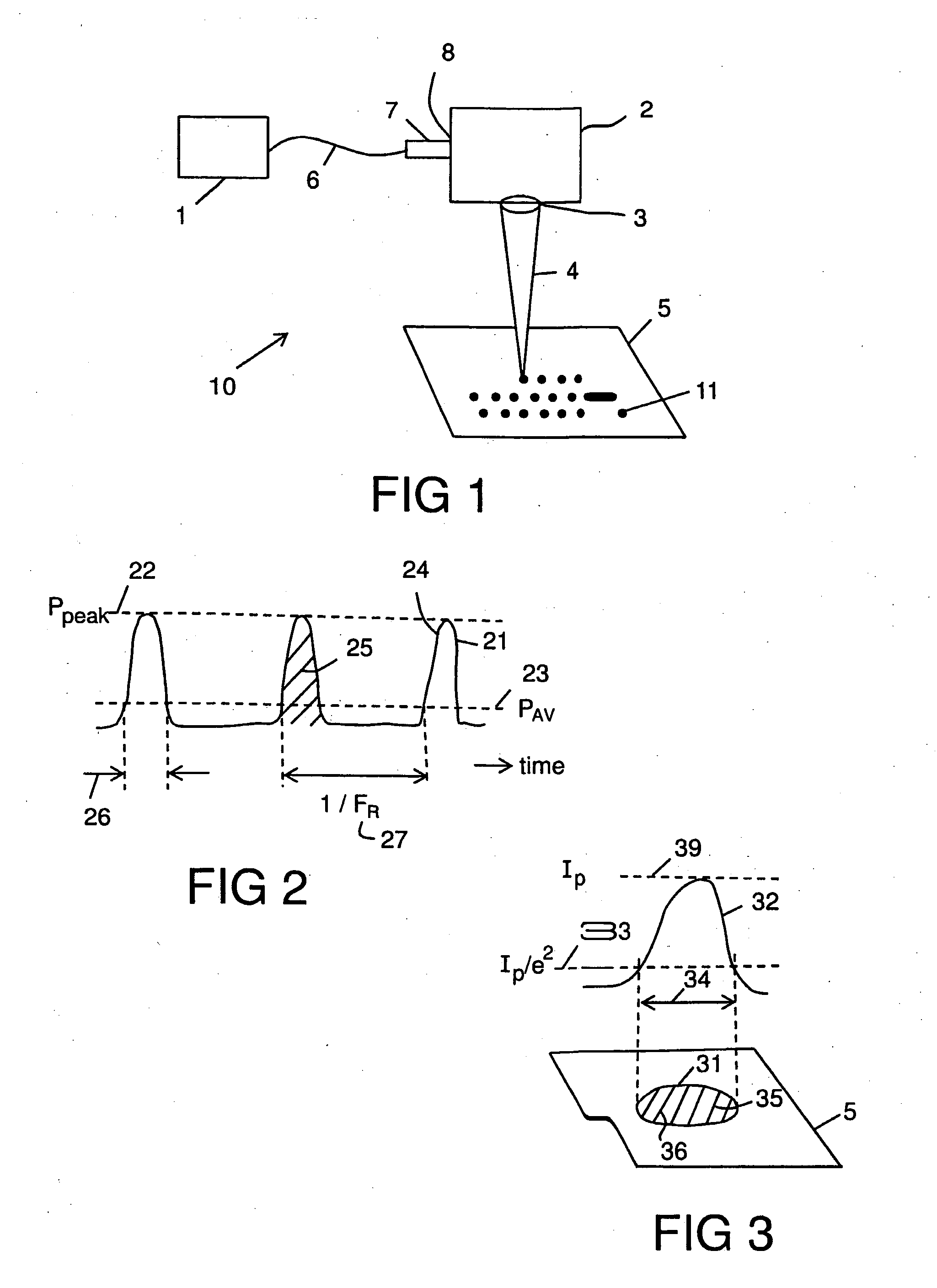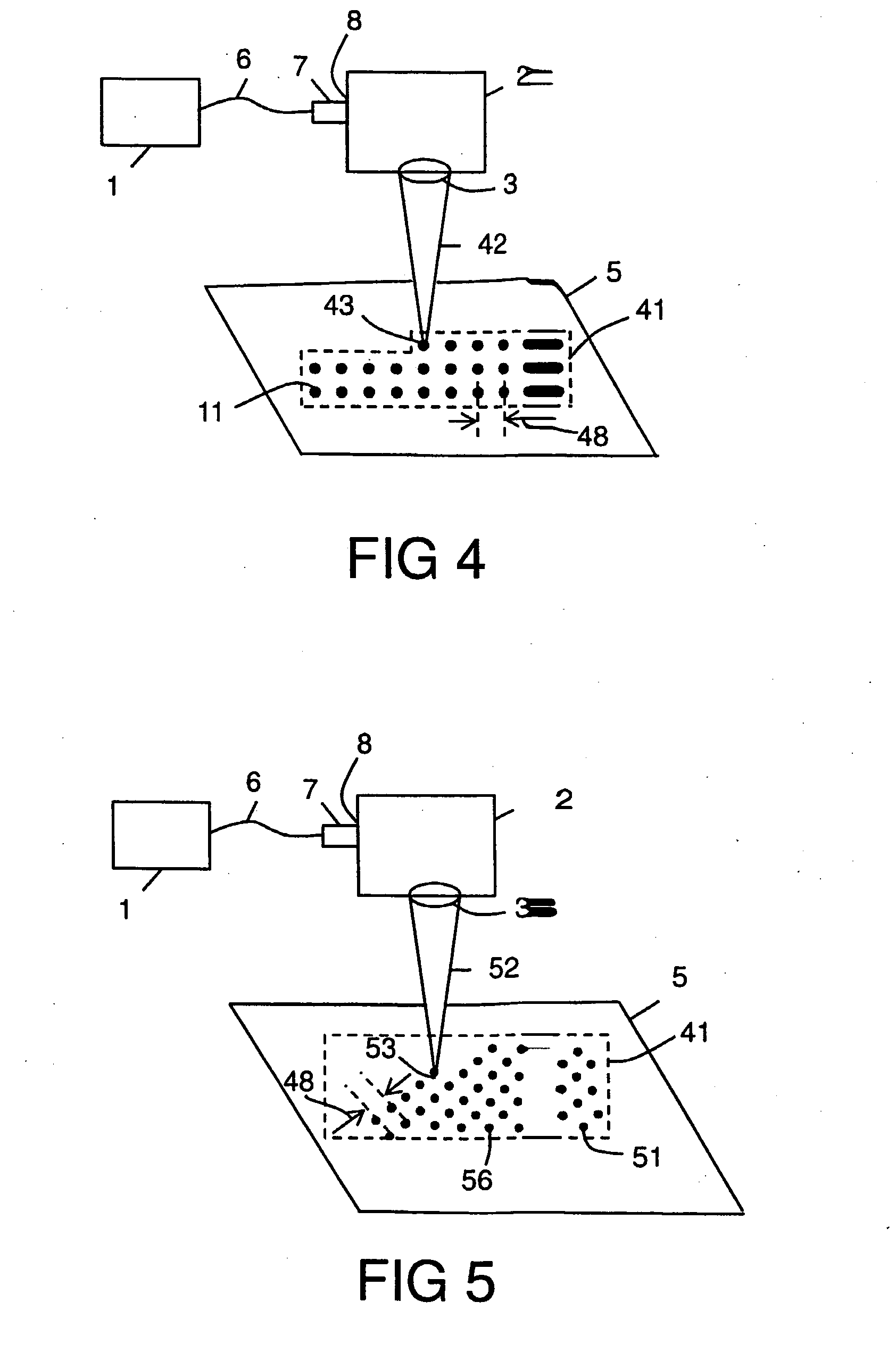Method for Laser Marking a Metal Surface with a Desired Colour
- Summary
- Abstract
- Description
- Claims
- Application Information
AI Technical Summary
Benefits of technology
Problems solved by technology
Method used
Image
Examples
example
[0059]The laser 1 shown with reference to FIGS. 4 and 5 was an air-cooled pulsed 20 W laser source, model G4 HS-L, manufactured by SPI Lasers UK Ltd of Southampton, England. The scanning means 2 was a galvanometric scan-head (called a scanner) model SuperScan II, manufactured by Raylase GmbH of Wessling Germany. The objective lens 3 was a 163 mm focal length f-theta objective lens. The first and the second laser beams 42, 52 were delivered from the laser 1 to the scanning means 2 via a 75 mm beam expanding collimator (BEC) 7 which enabled the laser beams to have a nominal diameter of 8 mm (1 / e2) at the scan head entrance 8. This allowed a laser beam waist diameter 34 of 50 μm + / −5.0 μm to be generated at the focal plane of the scanner objective lens 3. During normal operation of the workstation, the target metal surface 5 was placed at or near to this focal plane.
[0060]The laser 1 was capable of generating pulses in the nanosecond duration range (between approximately 5 ns to approx...
PUM
| Property | Measurement | Unit |
|---|---|---|
| Time | aaaaa | aaaaa |
| Time | aaaaa | aaaaa |
| Time | aaaaa | aaaaa |
Abstract
Description
Claims
Application Information
 Login to View More
Login to View More - R&D
- Intellectual Property
- Life Sciences
- Materials
- Tech Scout
- Unparalleled Data Quality
- Higher Quality Content
- 60% Fewer Hallucinations
Browse by: Latest US Patents, China's latest patents, Technical Efficacy Thesaurus, Application Domain, Technology Topic, Popular Technical Reports.
© 2025 PatSnap. All rights reserved.Legal|Privacy policy|Modern Slavery Act Transparency Statement|Sitemap|About US| Contact US: help@patsnap.com



